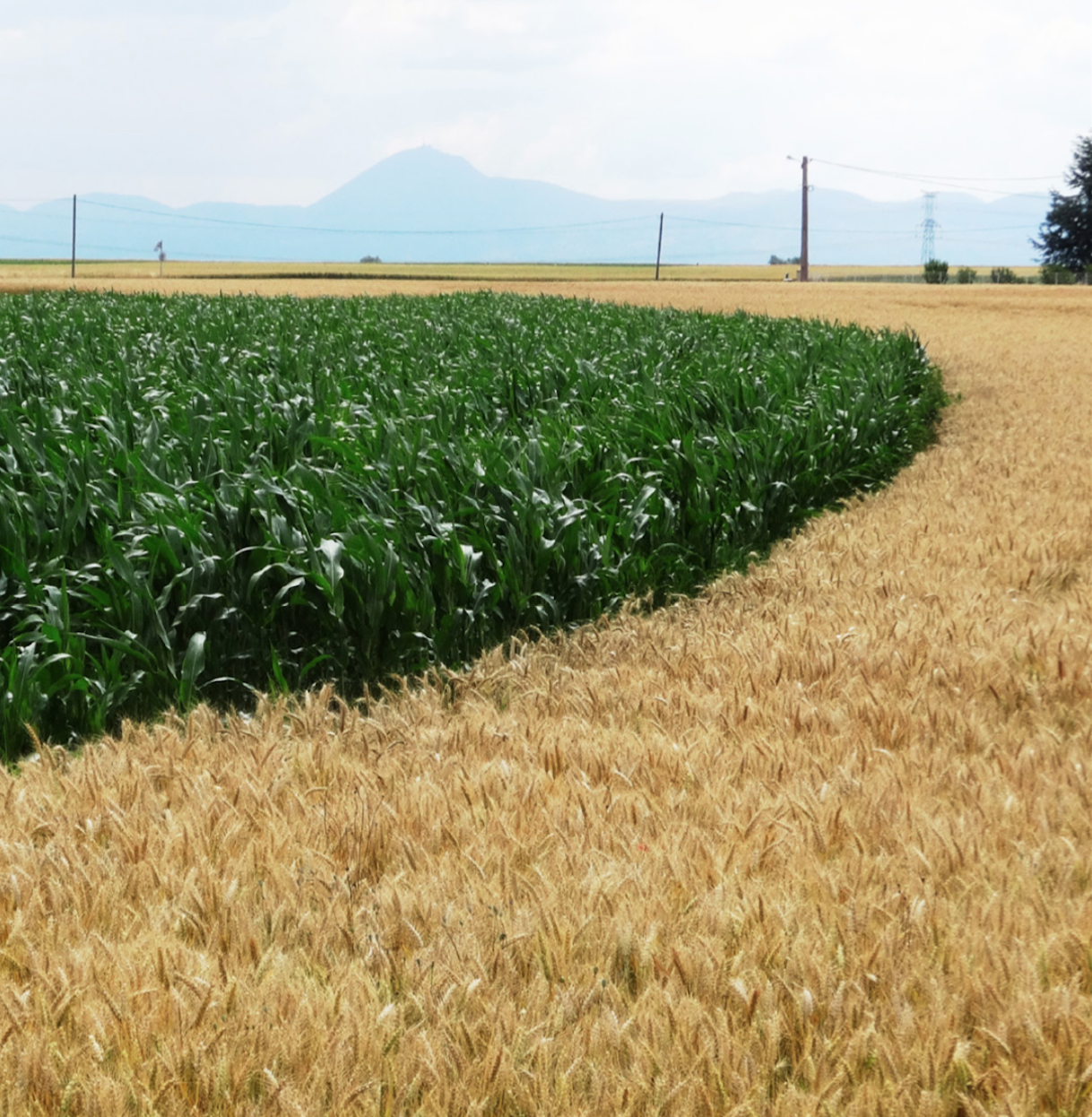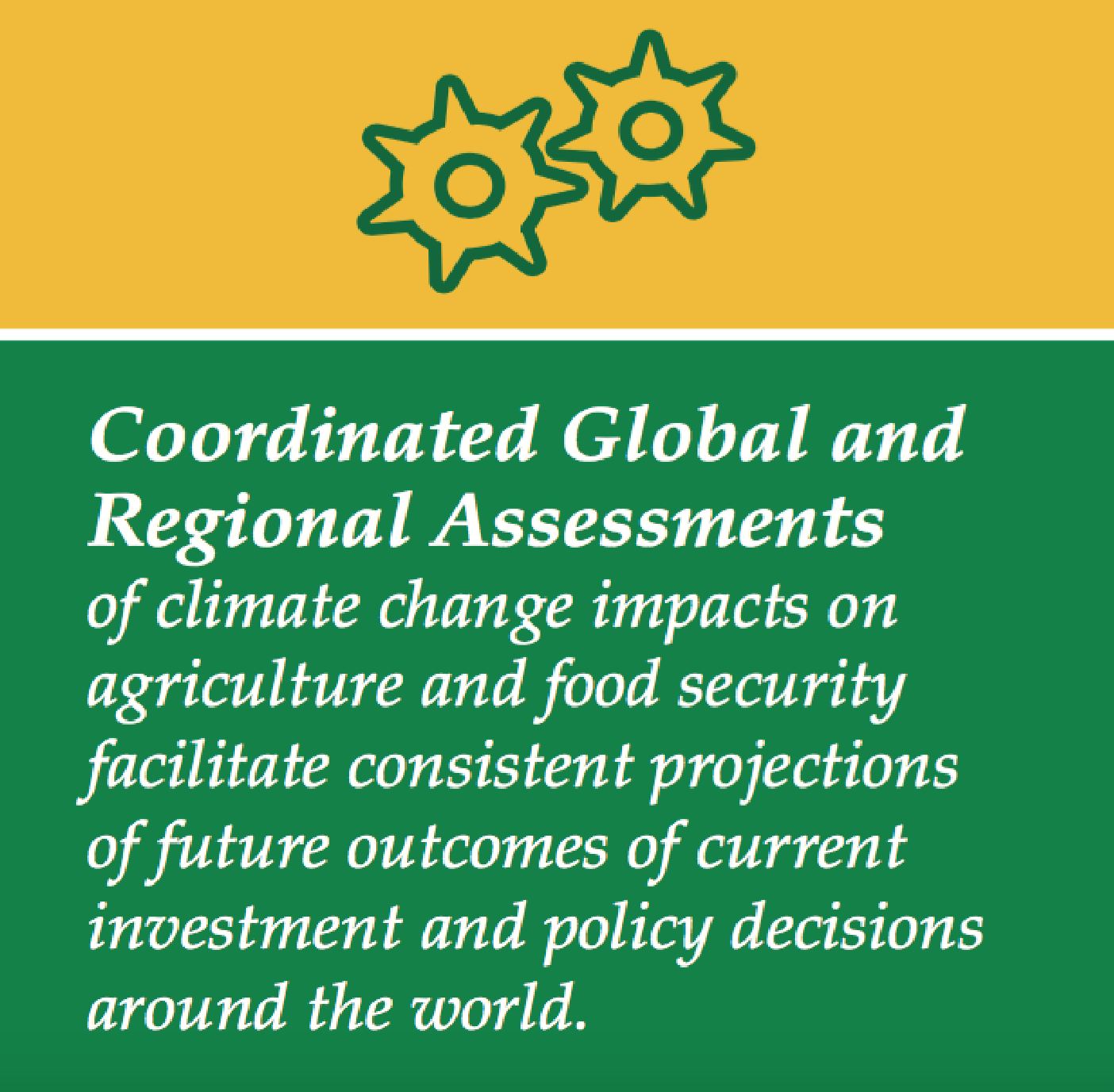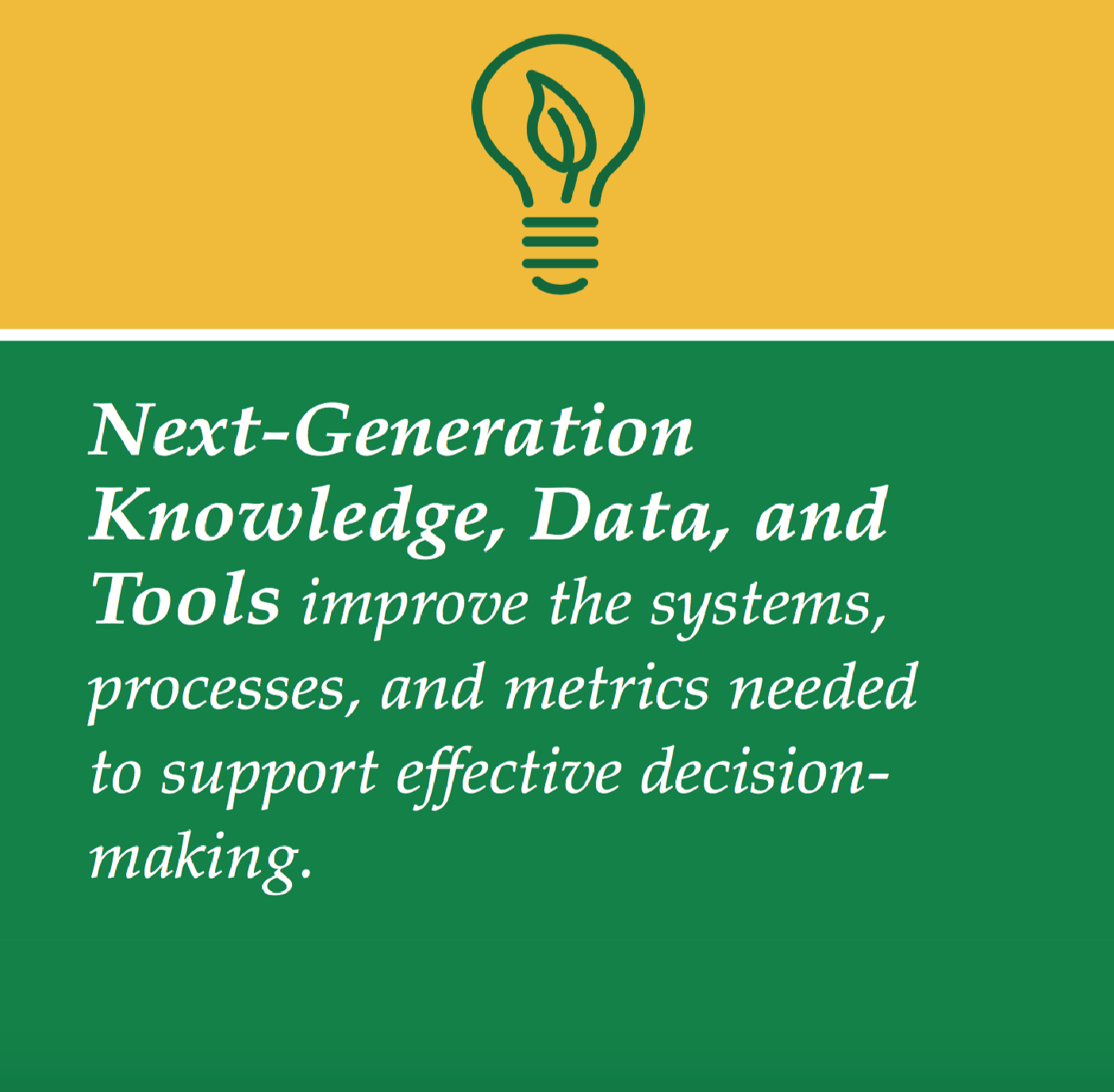Overview
Since 2010, the Agricultural Model Intercomparison and Improvement Project (AgMIP) community of experts has been advancing methods for improving predictions on the future performance of agricultural and food systems. AgMIP has advanced widely used tools and protocols for harmonized analyses of agricultural systems using the best available models. It has also advanced new methods to integrate stakeholder-informed scenarios into global and regional assessments of current and future agriculture and food systems outlooks given changing climate and other stresses. Stakeholders and Researchers regularly use the AgMIP tools, methods, and projections to advance their work.
The name AgMIP emphasizes the importance of inter- comparison for learning about models and for improving their components. Initial studies on wheat, corn, and rice systems, as well as economics have resulted in multiple-author, high-impact papers. This work is now motivating research that links agriculture and land use, nutrition, shocks, and many other related topics, with active participation of about 1,000 agricultural modelers and stakeholders worldwide.

Coordination

The AgMIP Coordination Unit anticipates, convenes, documents, monitors, and shares a wide range of processes and results. It supports the advancement of Research Themes set by AgMIP’s Steering Council; and facilitates progress and linkages enabled by the Executive Committee. It also convenes Research and Region Activity Leaders through regular Leaders Fora for updates, results sharing, and brainstorming. Overall, the Coordination Unit works to ensure:
-
Regular global workshops that are well structured and truly objective and agnostic relative to any particular model, where scientists share latest results with stakeholders.
-
Support to Steering, Executive, and Activity functions, with special attention to model improvements and processes for establishing high quality datasets and tools that render data and models interoperable, available, accessible, and useable.
-
Inclusive leadership at all levels that is supported and open to broad contributions.
-
Principles that emphasize scientific rigor and open access.
-
Representation of the worldwide community and its work on the AgMIP website (www.agmip.org)
Research Pillars



Key Accomplishments
- Global-scale linked climate-crop-economic model ensembles demonstrate vulnerability of global food systems to climate change and other factors.
- Crop Model Intercomparisons in major growing regions across the globe, coupled with field and satellite data, enable breakthroughs in crop model development for projecting future yields and key nutrients of major crops.
- The creation and provision of translators, data commons, and visualization tools contribute to global public goods that foster innovations such as ‘smart farms’ – growers that use ‘big data’, the internet of things, and artificial intelligence to improve agricultural outcomes.
- New AgMIP multi-model methods explore and quantify the ability of technologies and strategies to enable farming systems to adapt to climate change. They result in a portfolio of options to support investments in climate-smart agriculture. Stakeholders in Zimbabwe, Senegal, Pakistan, and India found the method uniquely useful for assessing options, leading to shifts in planning.
- An interactive decision support tool, the AgMIP Impacts Explorer, visualizes the multi-model and scenario-based research and provides access to key findings and data for users from general/education, policy/decision, and technical experts.
- A new cadre of modeling and stakeholder engagement experts is now in place across 15 countries of South Asia and Sub-Saharan Africa. These scientists are using the tools for research in their organizations and nations.
- Gridded global crop models detail shifts in availability and nutrient value of crops, as well as vulnerability of global food systems to climate shocks.
- Global economic models establish the impacts of climate change and mitigation efforts on agricultural production, consumption, prices, trade, and land use change.
- Quantification of estimated impact uncertainty supports policy decisions on climate change with protocols for model-ensemble applications for impact assessments. Identification of global hot-spots for climate change impact and support of national and international research agendas on adaptation research.
- A well-established global research network is responding to regional and global challenges that are beyond individual institutional and country capacity to solve. These arise from climate change, food security issues, and targets for development goals from national and UN organizations.
Next Steps
Food and Nutrition Security and Health are vulnerable to weather shocks and climate change. AgMIP methods can support activities that build regional capacity for integrated food system assessments inclusive of nutrition. They also provide a test bed for rapidly scaled-up research on food, nutrition, and health resilience strategies in the face of climate change. Deci- sion contexts can increasingly drive research that explores linked nutrition, crops, livestock, and economics aspects to transform food and nutrition delivery. AgMIP researchers in region can work with stakeholders to co-generate the science-based evidence to help deliver positive nutrition and health outcomes.
Stresses and Shocks can hugely undermine societal stability leading to civil unrest and migration. Understanding and anticipating stressors, tipping points, and interventions will make society more resilient to future food system shocks. AgMIP scientists are ana- lyzing recent changes in the global food system such as changing trade networks, food stocks, diseases, and diets; shifting probabilities of extreme climate eventsand how they could a ect multiple breadbasket regions;and, behaviors of governments, supply chains, private companies and other food system actors. AgMIP is developing real-time monitoring, probabilistic scenar- ios, and near-term forecasting of climate shocks to scale up integrated, multi-disciplinary, and action-oriented research in service to society.
Innovative Data, Model, and Knowledge Transfer Technology are needed for decision- making at farm, region, national, and global scales. AgMIP tools harmonize data and models resulting in datasuites that are ndable, accessible, interoperable, andre-usable. This enables new uses in model development and accelerates understanding and knowledge transfer across the community. It also facilitates demand-drivenresearch approaches targeted to speci c decision con– texts that better meet the needs of end-users. Improved information and methods will support better farm man-agement systems, accelerating the adoption and e cientuse of more productive and more sustainable technologies.
Transformational Change is resulting from collaborative innovation among a community of climate, agriculture, health, trade, food security and foreign aid experts. New tools translate and harmonize operations, linking research and decision frameworks to address food security and other societal needs in a world that is undergoing large and, at times, tumultuous changes in climate, socioeconomic development, and technology. The food system is strained to deliver affordable and nutritious food to world populations. Shifting base-lines alter risk profiles in ways yet to be fully understood, elevating the potential for shocks from climate or other factors, with acute, wide-ranging, and cascading impacts. The AgMIP community is advancing approaches to understand, predict, and address these challenges.
AgMIP Framework

